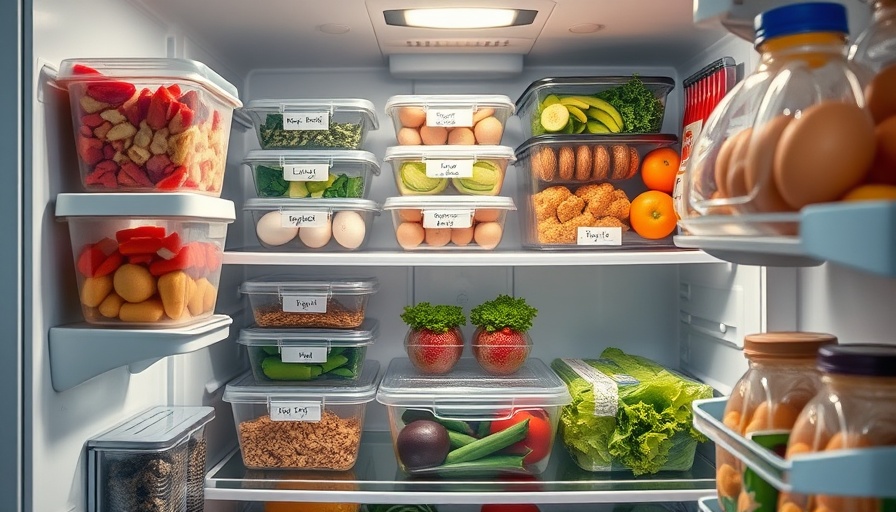
SEO Keyword: Smart Ways to Store Leftovers
In the realm of contemporary dining, the question of how to best store leftovers is more than just a matter of convenience; it reflects broader themes around food safety, sustainability, and wellness. Many households hold on to food after a meal, believing it's wasteful to simply toss it. However, improper storage can lead to foodborne illness and nutrition loss. So, what are the best practices to maintain delicious flavors and nutrients in your leftover meals? Let's explore effective strategies to ensure that your leftovers are both safe to eat and enjoyable to taste.
In 'How to Store Leftovers', the discussion dives into food preservation techniques, exploring key insights that sparked deeper analysis on our end.
Know the Importance of Food Safety
Understanding food safety is crucial for anyone who cooks or enjoys meals at home. According to the CDC, nearly 1 in 6 Americans gets sick from foodborne illnesses each year. Many of these cases could be prevented by proper food storage techniques. Leftovers should be refrigerated within two hours of cooking to slow down bacterial growth. Using airtight containers is a must, as they help keep out moisture and prevent spoilage.
Mind Your Containers: The Key to Freshness
Choosing the right containers can dramatically affect the quality and longevity of your leftovers. Glass containers are an excellent choice as they are non-toxic and can withstand temperature changes. They also allow you to see the contents easily, reducing the temptation to forget what's inside. Additionally, consider using vacuum-sealed bags for items you want to freeze; removing air from these bags prevents freezer burn—a common issue that can ruin the texture of your food.
Refrigerate or Freeze? Timing is Everything
Determining whether to refrigerate or freeze your leftovers should depend on when you plan to consume them. If you expect to eat leftovers within three to four days, refrigeration is appropriate. However, for longer storage, the freezer may be the best option. Foods stored in the freezer can last several months if packed correctly. Remember to label your containers with dates to avoid mystery meals down the line!
The Art of Reheating: Keep Tastes Intact
Reheating is as much an art as the initial cooking process. Research suggests that certain foods should be reheated using specific methods to maintain their taste, texture, and nutritional value. For example, soups and stews heat evenly on the stovetop, while casseroles do well in the oven. Microwaving is convenient, but it can lead to uneven heating if not monitored carefully. Stirring food halfway through the process can help ensure even warmth and safety.
Common Misconceptions About Leftover Storage
It’s easy to fall prey to myths regarding leftover storage—one common belief is that all food can be frozen indefinitely. However, the truth is that while freezing prevents spoilage, it does not preserve quality forever. Ideally, most meals should be consumed within three to six months of freezing. Dispelling these misconceptions can go a long way in helping you make informed decisions regarding your cooking and food storage practices.
Plan Your Meals: Help Your Future Self
The best way to make the most of your leftovers is by planning your meals ahead of time. Many people struggle with how to incorporate leftovers into future meals. A simple strategy is to prepare versatile ingredients that can be transformed into new dishes. For instance, roasted vegetables can reappear in a frittata, while grilled chicken could become part of a salad.
Inspirational Quotes About Food and Sustainability
As we become more conscious of our food impacts, it's worth noting an inspiring quote from chef Alex Guarnaschelli: "Food can be a source of joy, connection, and innovation if approached thoughtfully." Embracing this mindset not only opens up possibilities for creativity in the kitchen but also aligns our culinary choices with a sustainable lifestyle.
By being proactive in how you store leftovers, you are not only reducing waste but also taking a step toward healthier eating habits. Practicing good storage and reheating techniques will ensure that the time and effort you invest in cooking do not go to waste. Make a conscious effort to apply these tips to your routine, and watch as your leftovers become a delightful and integral part of your household meals.
 Add Row
Add Row  Add
Add 




Write A Comment